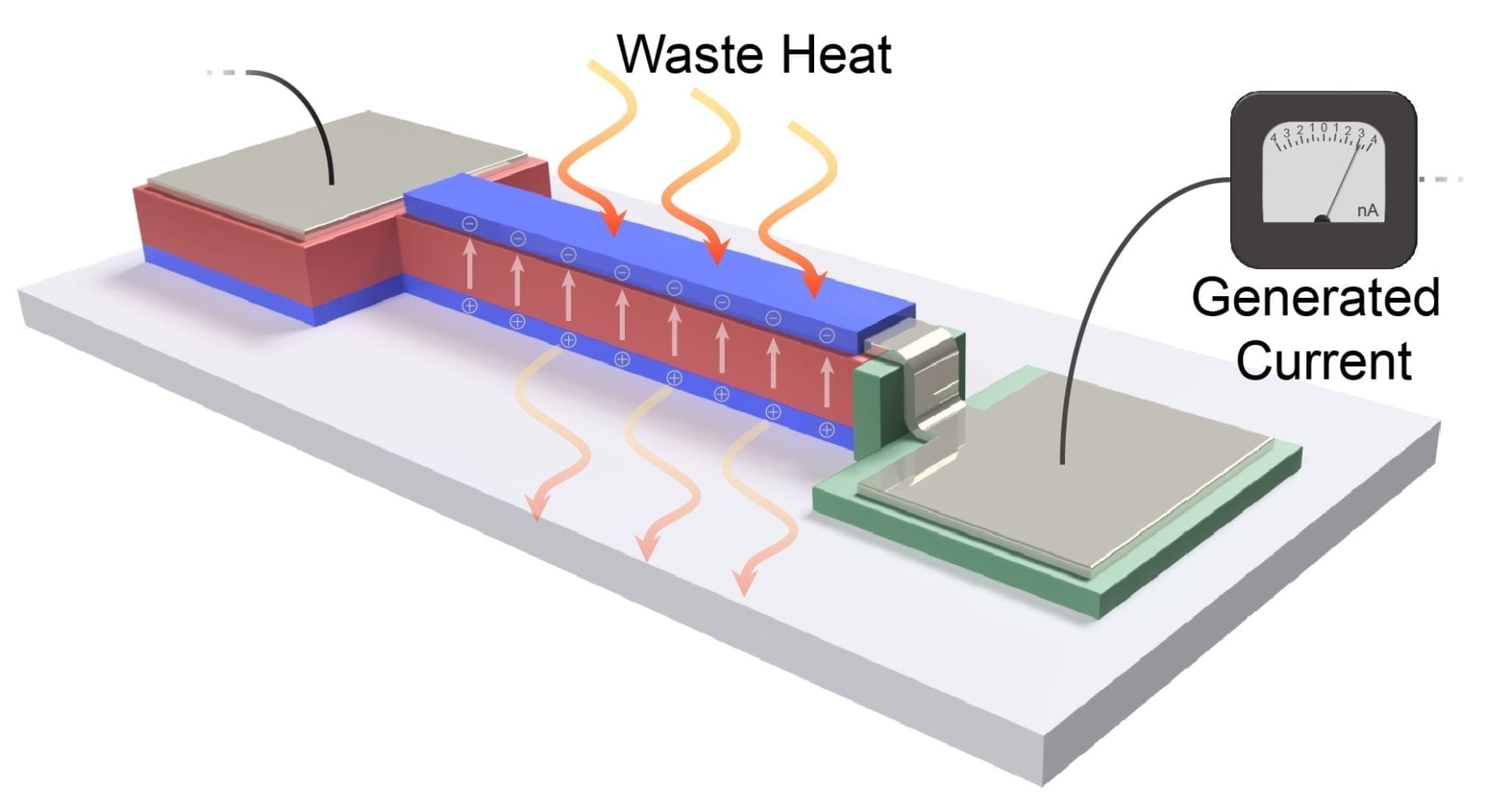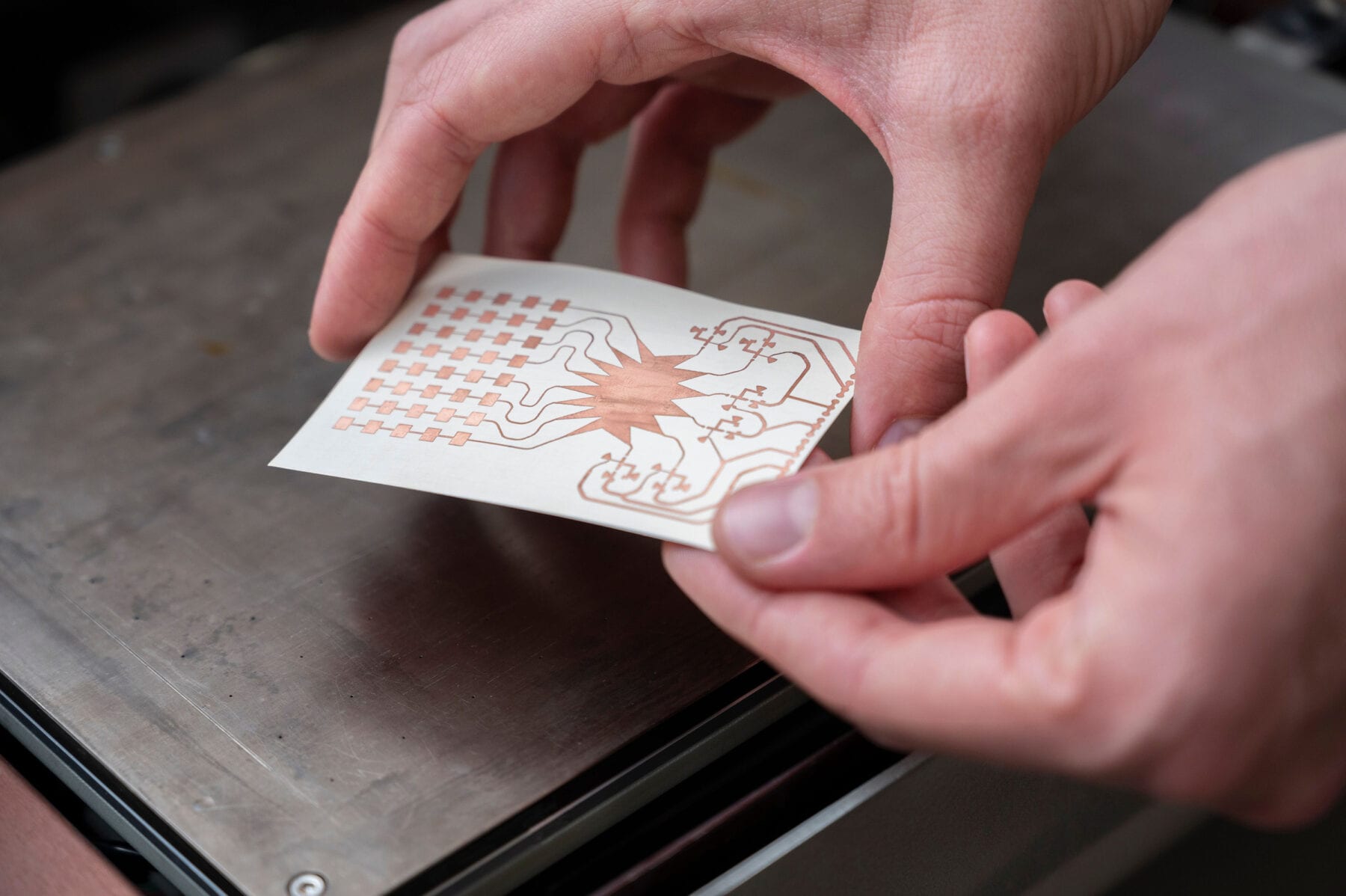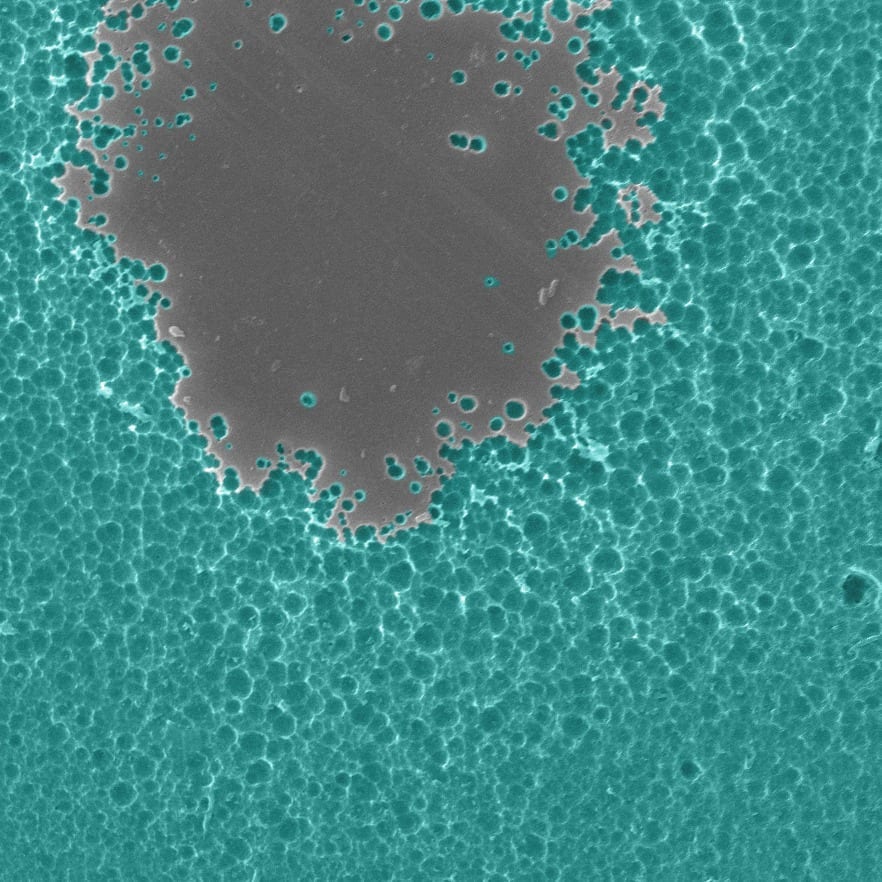
Nearly 70 percent of the energy produced in the United States each year is wasted as heat. Much of that heat is less than 100 degrees Celsius and emanates from things like computers, cars or large industrial processes. Engineers at the University of California, Berkeley, have developed a thin-film system that can be applied to sources of waste heat like these to produce energy at levels unprecedented for this kind of technology.
The thin-film system uses a process called pyroelectric energy conversion, which the engineers’ new study demonstrates is well suited for tapping into waste-heat energy supplies below 100 degrees Celsius, called low-quality waste heat. Pyroelectric energy conversion, like many systems that turn heat into energy, works best using thermodynamic cycles, kind of like how a car engine works. But unlike the engine in your car, pyroelectric energy conversion can be realized entirely in the solid state with no moving parts as it turns waste heat into electricity.
The new results suggest that this nanoscopic thin-film technology might be particularly attractive for installing on and harvesting waste heat from high-speed electronics but could have a large scope of applications. For fluctuating heat sources, the study reports that the thin film can turn waste heat into useable energy with higher energy density, power density and efficiency levels than other forms of pyroelectric energy conversion.
“We know we need new energy sources, but we also need to do better at utilizing the energy we already have,” said senior author Lane Martin, associate professor of materials science and engineering. “These thin films can help us squeeze more energy than we do today out of every source of energy.”
The research will be published April 16 in the journal Nature Materials. The research was supported, in part, by grants from the Army Research Office and the National Science Foundation.
Pyroelectric behavior has been known for a long time, but accurately measuring the properties of thin-film versions of pyroelectric systems has remained a challenge. A significant contribution of the new study is to demystify that process and improve the understanding of pyroelectric physics.
Martin’s research team synthesized thin-film versions of materials just 50-100 nanometers thick and then, together with the group of Chris Dames, associate professor of mechanical engineering at Berkeley, fabricated and tested the pyroelectric-device structures based on these films. These structures allow the engineers to simultaneously measure the temperature and electrical currents created, and source heat to test the device’s power generation capabilities – all on a film that’s less than 100 nanometers thick.
“By creating a thin-film device, we can get the heat into and out of this system quickly, allowing us to access pyroelectric power at unprecedented levels for heat sources that fluctuate over time,” Martin said. “All we’re doing is sourcing heat and applying electric fields to this system, and we can extract energy.”
This study reports new records for pyroelectric energy conversion energy density (1.06 Joules per cubic centimeter), power density (526 Watts per cubic centimeter) and efficiency (19 percent of Carnot efficiency, which is the standard unit of measurement for the efficiency of a heat engine).
The next steps in this line of research will be to better optimize the thin-film materials to specific waste heat streams and temperatures.
“Part of what we’re trying to do is create a protocol that allows us to push the extremes of pyroelectric materials so that you can give me a waste-heat stream and I can get you a material optimized to address your problems,” Martin said.
Learn more: Thin film converts heat from electronics into energy
The Latest on: Pyroelectric energy conversion
[google_news title=”” keyword=”pyroelectric energy conversion” num_posts=”10″ blurb_length=”0″ show_thumb=”left”]
via Google News
The Latest on: Pyroelectric energy conversion
- Powering homes with PVT energy, Stirling engines, battery storageon May 9, 2024 at 2:52 am
UK scientists have proposed a way to combine photovoltaic-thermal energy with Stirling engines and battery storage in residential buildings. Despite the high upfront costs, they said the ...
- Energyon May 3, 2024 at 5:01 pm
May 4, 2024 • Ithaca, N.Y., will require that 50% of the money spent on its energy transition and on major infrastructure projects is directed toward those residents most at risk from climate ...
- Devices for energy harvesting articles from across Nature Portfolioon April 25, 2024 at 5:00 pm
These solar cells can be integrated into a drone to enable energy-autonomous flight ... report photovoltaic heterostructure device with pyroelectric absorber, achieving 2.5 times more output ...
- This device gathers, stores electricity in remote settingson April 9, 2024 at 2:41 pm
"It's our idea for an integrated device that could harvest ambient thermal energy and convert it directly ... The PEC uses a pyroelectric composite material, as the separator in an electrochemical ...
- New device gathers, stores electricity in remote settingson April 8, 2024 at 5:00 pm
The PEC uses a pyroelectric composite material ... The study, titled "Direct Conversion of Thermal Energy to Stored Electrochemical Energy via a Self-Charging Pyroelectrochemical Cell," was ...
- Renewable Energy Newson April 7, 2024 at 5:00 pm
Apr. 17, 2024 — Wind power is a source of energy that is both affordable and ... cell that can achieve a certified world-record power conversion efficiency of 27.1 per cent across a solar ...
- How Much Does Garage Conversion Cost? (2024 Guide)on March 15, 2024 at 2:58 am
A garage conversion has a typical cost range of $6,012 to $27,090, and a national average cost of $16,199. There are several factors that can affect the total cost, including the size and type of ...
- What are nanogenerators? Explaining their types, applications, and potentialon April 4, 2023 at 4:22 am
PyENGs harness the pyroelectric effect, in which certain materials generate ... to improve efficiency and power output. By exploiting multiple energy conversion mechanisms, hybrid nanogenerators can ...
- Why Is Energy Efficiency Being Ignored?on December 2, 2022 at 3:21 am
Opinions expressed by Forbes Contributors are their own. I write about innovation, finance, energy, climate and sustainability. The world is wasting too much energy. Inefficient vehicles and ships ...
via Bing News











